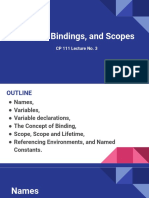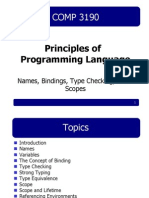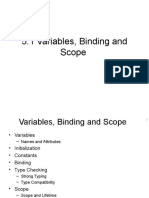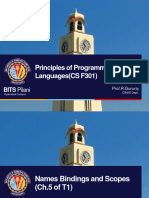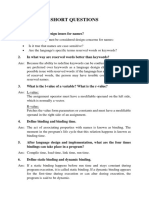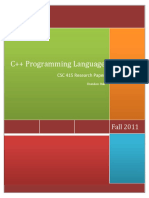0% found this document useful (0 votes)
39 views35 pagesLecture 3
The document discusses names, bindings, and scopes in programming languages. It covers topics like variables, types of bindings, variable attributes, and scopes. The document provides examples from different programming languages to illustrate concepts.
Uploaded by
Raphael KuayiCopyright
© © All Rights Reserved
We take content rights seriously. If you suspect this is your content, claim it here.
Available Formats
Download as PDF, TXT or read online on Scribd
0% found this document useful (0 votes)
39 views35 pagesLecture 3
The document discusses names, bindings, and scopes in programming languages. It covers topics like variables, types of bindings, variable attributes, and scopes. The document provides examples from different programming languages to illustrate concepts.
Uploaded by
Raphael KuayiCopyright
© © All Rights Reserved
We take content rights seriously. If you suspect this is your content, claim it here.
Available Formats
Download as PDF, TXT or read online on Scribd
/ 35








